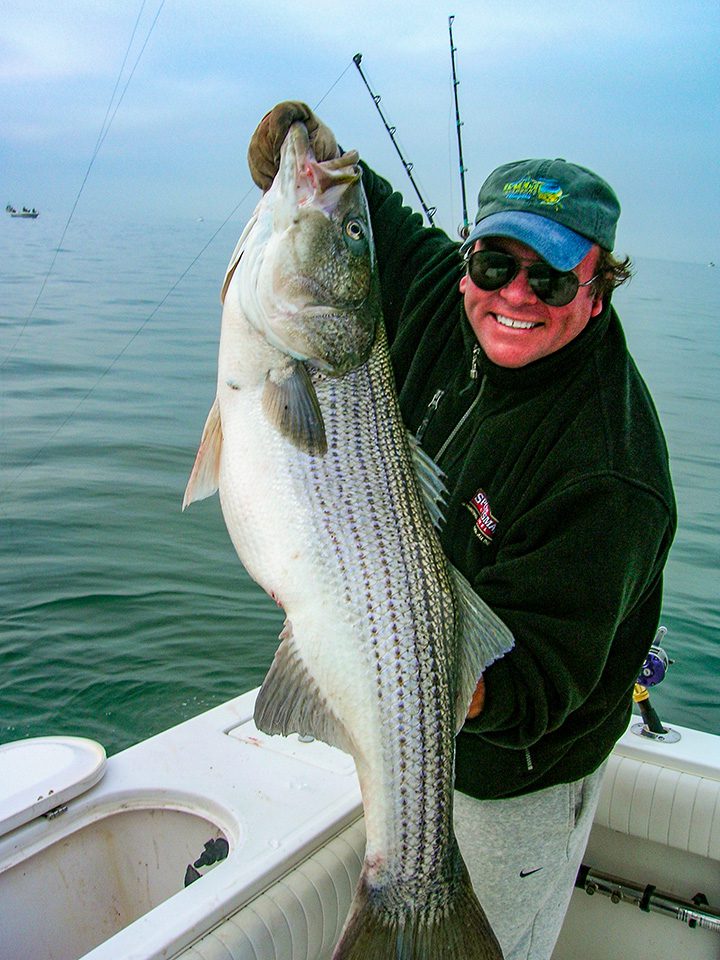
By Jim Baugh
Jim Baugh Outdoors TV has had the pleasure of filming in most parts of the East Coast over the last 33 years. However, the bulk of our programming comes from the Mid-Atlantic region. The Chesapeake Bay and its tidal rivers, and all up and down the Outer Banks has been our mainstay of outdoor storytelling.
Every region in the United States has a species of fish it is known for. From largemouth bass to white marlin, where you are determines what you catch.
While our Mid-Atlantic states offer a large variety of species to fish for, one of the most popular fish—and one that the Chesapeake Bay area is renowned for—is rockfish. Also known as striped bass, these fish are widely sought after because they grow large, put up a decent fight and will make for one of the most delicious holiday meals one will ever have. ’Tis the season for rockfish!
Our favorite rockfish has had its ups and downs over the years. In years past, there have been moratoriums, then come backs, then the fish seem to “disappear” by simply not coming into the bay, then everything seems to rebound again. These fish are pretty closely monitored, and I do hope all sportsmen will adhere to the regulations. These swings affect a lot of things like tourism dollars and fishing tournaments.
One of the longest-running and best-run rockfish tournaments is the Rockfish Shootout, held at the Oyster Farm on Virginia’s Eastern Shore in December. If you are thinking about coming to our area, I highly suggest you try this tourney out. It is always a great event.
If you are coming to the Chesapeake Bay and are new to rockfishing, here is some good advice. As always, contact local tackle shops to get the latest and current info. Hiring an experienced local charter is always a great idea and will introduce you to how the locals catch their fish.
A tried-and-true method is live eeling, simply with a freeline or small sinker. Fish the channels and over the tunnels of the Chesapeake Bay Bridge or the Hampton Roads Bridge Tunnel. These bridges have fantastic “light lines” in the water caused by the highway lights on the bridges. Get yourself some bucktails and soft-plastic shad and cast to the pilings at night. Just be sure to fish the up-current side of the bridge pilings.